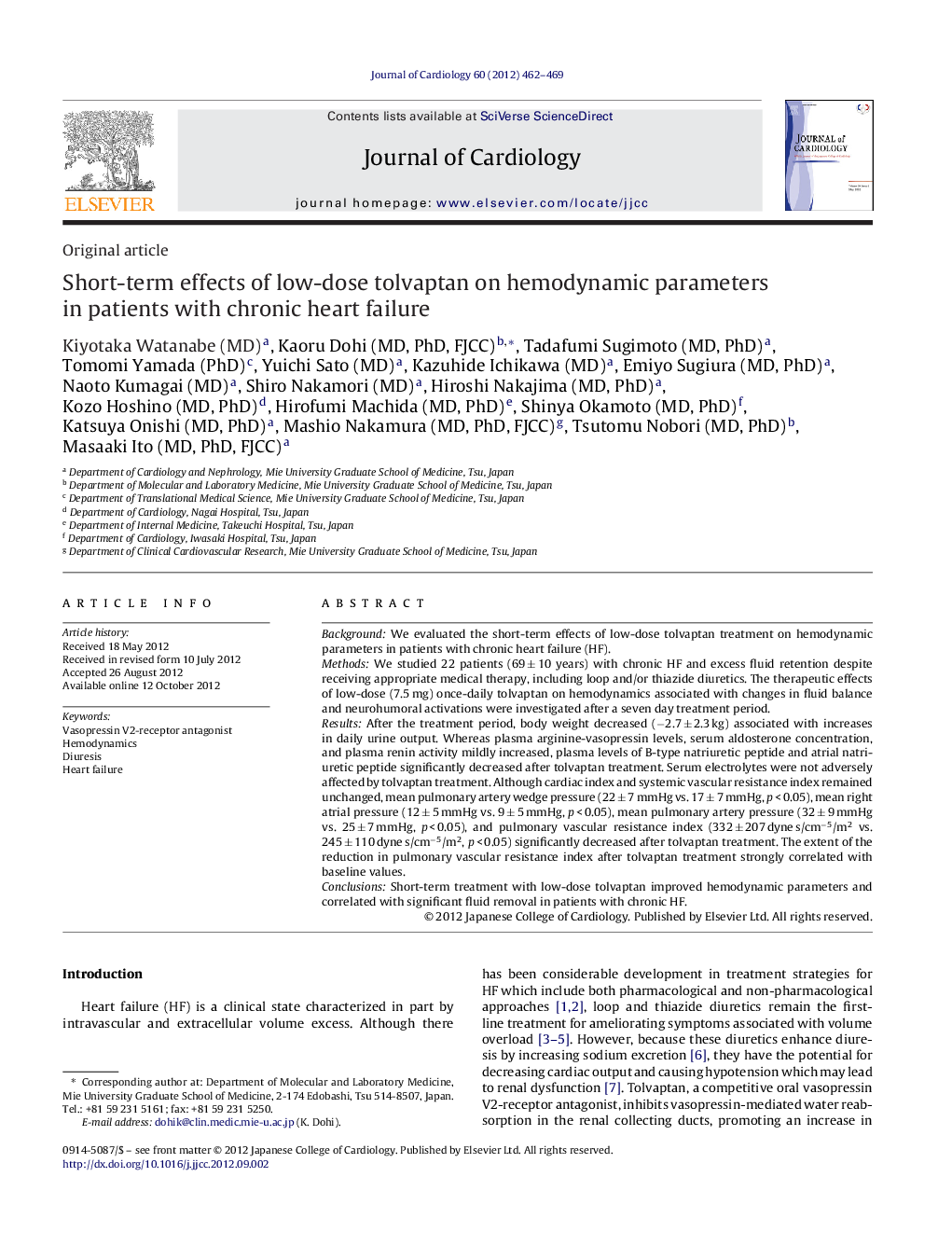| Article ID | Journal | Published Year | Pages | File Type |
|---|---|---|---|---|
| 2963084 | Journal of Cardiology | 2012 | 8 Pages |
BackgroundWe evaluated the short-term effects of low-dose tolvaptan treatment on hemodynamic parameters in patients with chronic heart failure (HF).MethodsWe studied 22 patients (69 ± 10 years) with chronic HF and excess fluid retention despite receiving appropriate medical therapy, including loop and/or thiazide diuretics. The therapeutic effects of low-dose (7.5 mg) once-daily tolvaptan on hemodynamics associated with changes in fluid balance and neurohumoral activations were investigated after a seven day treatment period.ResultsAfter the treatment period, body weight decreased (−2.7 ± 2.3 kg) associated with increases in daily urine output. Whereas plasma arginine-vasopressin levels, serum aldosterone concentration, and plasma renin activity mildly increased, plasma levels of B-type natriuretic peptide and atrial natriuretic peptide significantly decreased after tolvaptan treatment. Serum electrolytes were not adversely affected by tolvaptan treatment. Although cardiac index and systemic vascular resistance index remained unchanged, mean pulmonary artery wedge pressure (22 ± 7 mmHg vs. 17 ± 7 mmHg, p < 0.05), mean right atrial pressure (12 ± 5 mmHg vs. 9 ± 5 mmHg, p < 0.05), mean pulmonary artery pressure (32 ± 9 mmHg vs. 25 ± 7 mmHg, p < 0.05), and pulmonary vascular resistance index (332 ± 207 dyne s/cm−5/m2 vs. 245 ± 110 dyne s/cm−5/m2, p < 0.05) significantly decreased after tolvaptan treatment. The extent of the reduction in pulmonary vascular resistance index after tolvaptan treatment strongly correlated with baseline values.ConclusionsShort-term treatment with low-dose tolvaptan improved hemodynamic parameters and correlated with significant fluid removal in patients with chronic HF.
